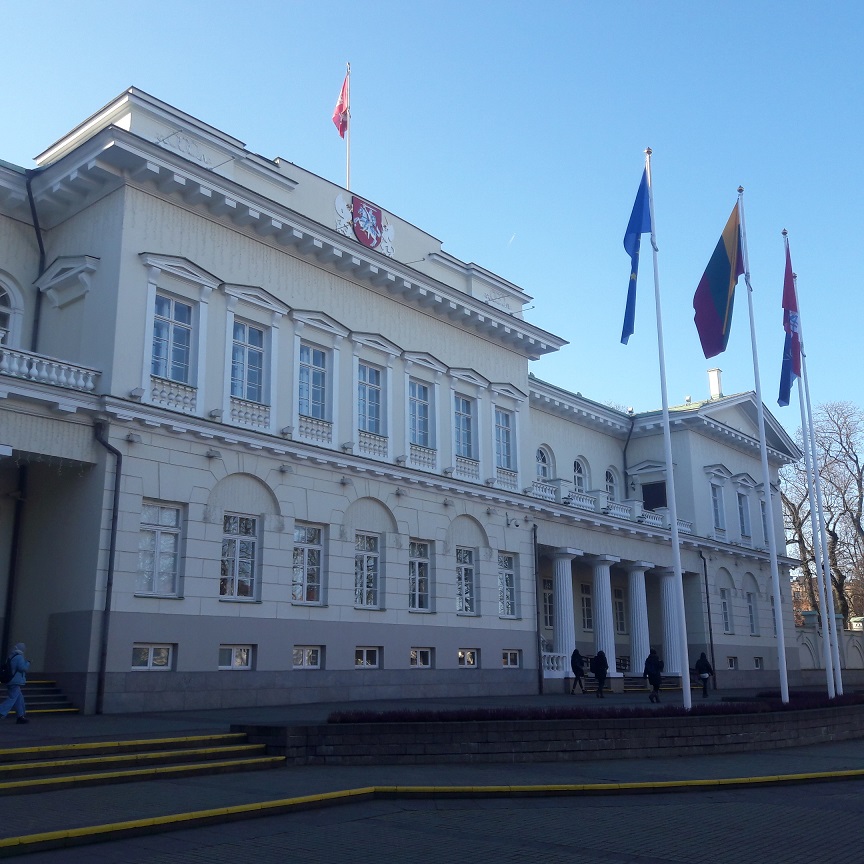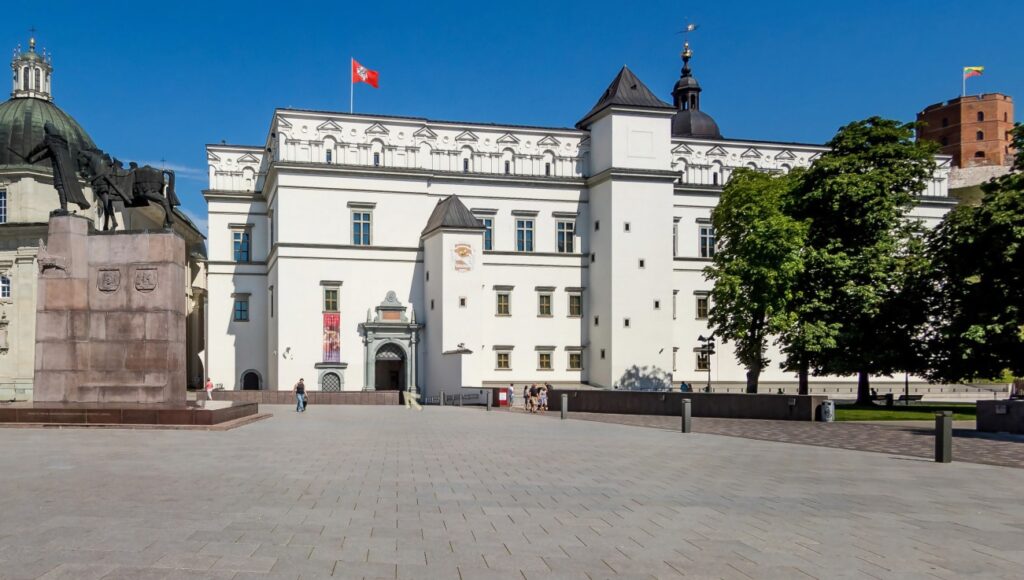Presidential Palace in Vilnius

The history of this palace (Daukanto Sq.3) is no less complex than that of the majority of famous Vilnius buildings.
It is known since the 14th century as a residency of the noblemen Gastold. In 1543 it was acquired by the Vilnius bishops who resided there until 1794. The remains of brick building that have been discovered may belong to the earliest bishops’ palace, in which Bishop Christian crowned King Mindaugas.
In 1812 Napoleon lived there. In 1824-32 Karol Podczaszynski reconstructed the palace according to a project by the famous Russian architect Vasily Stasov. Since the palace blocked Universiteto St., part of the Universiteto St., part of the university buildings standing closer to the street were pulled down.
The palace has always been representational: rulers, kings and kings-to-be-Napoleon, Stanislaus August Poniatowski, Russian tsar Alexander I, King of France Louis XVIII and others – used to stay there on their visits to Vilnius. For some time the palace was a residence of Governor General Mikhail Muravyov who suppressed the 1863 uprising. Later Jozef Pilsudski and presidents of Poland used to stay in the palace. The Soviets turned it into an officers’ club, later to be converted into the Artists House.

In 1939, when Vilnius had been returned to Lithuania, plans to settle the Presidency in the palace were advanced. It was not until 1997 that these plans were carried out. Here the President performs his duties and receives foreign dignitaries. The palace facade bears the Vytis sign. When the President is in the palace, the presidential flag is raised above the Vytis.
The palace is built in the late Classical (Empire) style, monumental and solemn. Having designed many significant buildings in St.Petersburg, Stasov followed the patterns of St.Petersburg architecture here as well.
The palace has 3 risalitas protruding into the square and the courtyard. The square facade is decorated by triangular pediments, a parapet and Doric columns. Particularly elegant is the courtyard facade with an Ionic colonnade, flanked by side colonnades and a crops-de-garde. A sizeable garden stretches out behind the palace.
This regular ensemble seems to be inlaid in the chaotic mediaeval old town of Vilnius.


